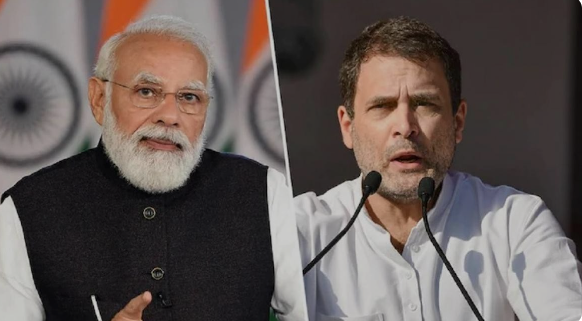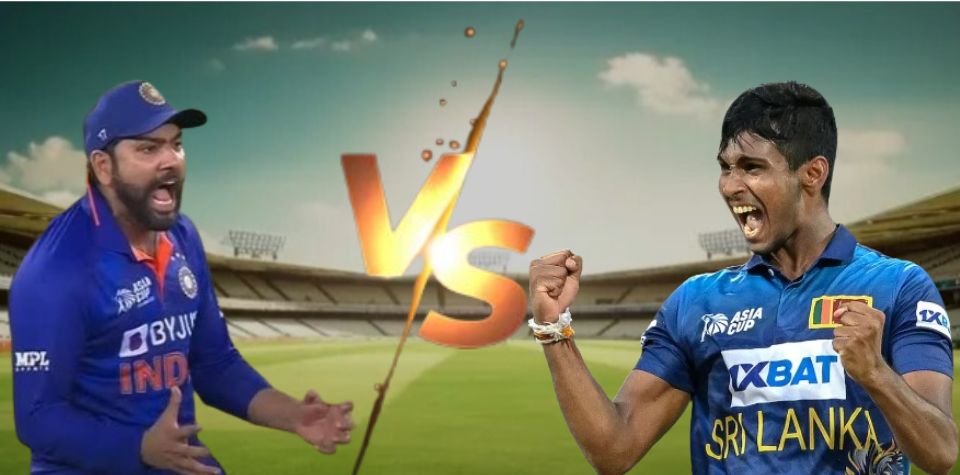Former Prime Minister Narendra Modi faced significant backlash in the recent Indian General Elections. While the opposition alliance did not secure a majority, they significantly increased their seats in parliament.
Dictatorship in the modern era does not only mean one person rule or rule without a constitution. Nowadays, leaders dictate nations by manipulating their country’s power and abusing their constitutional authority.
Narendra Modi’s rule over the last ten years is a prime example of a modern dictatorship that uses constitutional manipulation.
Dictatorship, in simple terms, is a type of rule in which one person makes all the decisions without considering others’ opinions. Modern dictatorship can be defined as someone making all the decisions while ignoring or misusing the rules set by the Constitution and its governing bodies.
Former Indian Prime Minister Narendra Modi exhibited these traits throughout his tenure. He misused governmental bodies and institutions to silence dissent, disregarded judicial decisions, and dismissed opposition leaders to push his agenda through parliament.
Modi’s approach often sidelined the voices and opinions of others, effectively centralizing power in his own hands. In many ways, Modi dictated even his own Bharatiya Janata Party, undermining the credibility of his fellow leaders.
Modi was able to wield immense power due to the mandate he held, compounded by the weakness of the opposition and the lack of authoritative figures within his own party to challenge him. However, the dynamics have shifted drastically in recent Indian General Elections.
The individual who once confidently associated himself with every announcement, be it the party’s manifesto or the nation’s endeavors, under the banner of “Modi’s guarantee” is now compelled to substitute his name with the broader NDA (National Democratic Alliance).
Now, he has to consider others’ perspectives and options. Even as Prime Minister of India, Mr Modi will find his powers limited and unable to take decisions unilaterally. This change marks what I see as the end of dictatorship!
Overall results of Indian General elections
India held elections for all 543 general assembly seats to determine its Prime Minister and members of parliament. The main contenders were two alliances: NDA (National Democratic Alliance), comprising Narendra Modi’s Bharatiya Janata Party, and INDIA (National Developmental Inclusive Alliance), led by Rahul Gandhi’s Indian National Congress.
NDA aimed to retain the Prime Minister’s seat, while INDIA sought to reinforce its political credibility. Fortunately, both alliances achieved their objectives following the release of the Indian General Elections results.
NDA surpassed the required majority to form the government, while INDIA significantly increased its parliamentary seats, consolidating its legislative presence.
Modi’s alliance clinched 293 seats out of 543 upper house seats, whereas Rahul’s INDIA secured 234 seats. Non-alliance candidates claimed a mere 16 seats.
It’s crucial to note that while the NDA alliance has the majority to form the government, the BJP alone does not. Therefore, there is no guarantee that Narendra Modi will become prime minister.
To establish the government, he will require support from his alliance partners and will remain dependent on their cooperation throughout the five-year term.
State Wise Election Results
According to the Election Commission of India, a total of 6 national parties, 57 state parties, and 2,764 unrecognized parties participated in the Indian General elections. However, only 39 parties managed to secure at least one seat.
The Bharatiya Janata Party achieved the highest vote share at 36.56 percent, while the Indian National Congress garnered 21.19 percent. Akhilesh Yadav’s Samajwadi Party significantly improved its standing, obtaining 4.58 percent of the vote to become the third highest party in the Indian General Elections.
Party: Bharatiya Janata Party (BJP)
Won in 2024: 240
Total Seat Change: -63
Party: Indian National Congress (INC)
Won in 2024: 99
Total Seat Change: +47
Party: Samajwadi Party (SP)
Won in 2024: 37
Total Seat Change: +32
Party: All India Trinamool Congress (AITC)
Won in 2024: 29
Total Seat Change: +7
Party: Dravida Munnetra Kazhagam (DMK)
Won in 2024: 22
Total Seat Change: -2
Party: Telugu Desam Party (TDP)
Won in 2024: 16
Total Seat Change: +13
Party: Janata Dal (United) (JD(U))
Won in 2024: 12
Total Seat Change: -4
Party: Shiv Sena (Uddhav Balasaheb Thackeray)
Won in 2024: 9
Total Seat Change: +9
Party: Nationalist Congress Party (Sharadchandra Pawar)
Won in 2024: 8
Total Seat Change: +8
Party: Shiv Sena (Shinde)
Won in 2024: 7
Total Seat Change: -11
Party: Independent
Won in 2024: 7
Total Seat Change: +2
Party: Lok Janshakti Party (Ram Vilas) (LJP)
Won in 2024: 5
Total Seat Change: -1
Party: Yuvajana Sramika Rythu Congress Party (YSRCP)
Won in 2024: 4
Total Seat Change: -18
Party: Communist Party of India (Marxist) (CPI(M))
Won in 2024: 4
Total Seat Change: +1
Party: Rashtriya Janata Dal (RJD)
Won in 2024: 4
Total Seat Change: +4
Party: Indian Union Muslim League (IUML)
Won in 2024: 3
Total Seat Change: –
Party: Aam Aadmi Party (AAP)
Won in 2024: 3
Total Seat Change: +2
Party: Jharkhand Mukti Morcha (JMM)
Won in 2024: 3
Total Seat Change: +2
Party: Jammu and Kashmir National Conference (JKNC)
Won in 2024: 2
Total Seat Change: -1
Party: Communist Party of India (CPI)
Won in 2024: 2
Total Seat Change: –
Party: Janata Dal (Secular) (JD(S))
Won in 2024: 2
Total Seat Change: +1
Party: Viduthalai Chiruthaigal Katchi (VCK)
Won in 2024: 2
Total Seat Change: +1
Party: Communist Party of India (Marxist-Leninist) (CPI(ML)L)
Won in 2024: 2
Total Seat Change: +2
Party: Janasena Party (JSP)
Won in 2024: 2
Total Seat Change: +2
Party: Rashtriya Lok Dal (RLD)
Won in 2024: 2
Total Seat Change: +2
Party: Nationalist Congress Party (NCP)
Won in 2024: 1
Total Seat Change: -4
Party: All India Majlis-E-Ittehadul Muslimeen (AIMIM)
Won in 2024: 1
Total Seat Change: -1
Party: Apna Dal (Soneylal)
Won in 2024: 1
Total Seat Change: -1
Party: Shiromani Akali Dal (SAD)
Won in 2024: 1
Total Seat Change: -1
Party: Ajsu Party
Won in 2024: 1
Total Seat Change: –
Party: Rashtriya Loktantrik Party (RLP)
Won in 2024: 1
Total Seat Change: –
Party: Revolutionary Socialist Party (RSP)
Won in 2024: 1
Total Seat Change: –
Party: Sikkim Krantikari Morcha (SKM)
Won in 2024: 1
Total Seat Change: –
Party: Aazad Samaj Party (Kanshi Ram) (ASP)
Won in 2024: 1
Total Seat Change: +1
Party: Asom Gana Parishad (AGP)
Won in 2024: 1
Total Seat Change: +1
Party: Bharat Adivasi Party (BAP)
Won in 2024: 1
Total Seat Change: +1
Party: Hindustani Awam Morcha (Secular) (HAM(S))
Won in 2024: 1
Total Seat Change: +1
Party: Kerala Congress (KC)
Won in 2024: 1
Total Seat Change: +1
Party: Marumalarchi Dravida Munnetra Kazhagam (MDMK)
Won in 2024: 1
Total Seat Change: +1
Which party will lead the new government in India?
It’s not straightforward to determine who will lead the government of India after the 2024 Indian General Elections. The BJP is the single largest party, and its alliance has the majority of seats needed. Thus, the Bharatiya Janata Party can potentially form the government with the support of its allies.
However, the Indian National Congress (INC) is also vying to form the government. If leaders like Nitish Kumar and Chandra Babu Naidu lend their support to the INC, they might reach the majority needed to establish the government.
Reasons Behind Narendra Modi’s Declining Performance
Of course, it’s not just Narendra Modi; the entire NDA faltered in the 2024 Indian General Elections. We deliberately highlight this because from 2014 to 2024, there seemed to be no NDA—only Narendra Modi. From the smallest gesture of distributing free food packets to towering hoardings lining the streets, Modi’s omnipresence was unmistakable.
He seemed to disregard the opposition, the Constitution, and even his own coalition. Every national development was attributed to Modi’s supposed magic. He even appropriated the courage of our armed forces, shamelessly seeking votes on the back of military strikes against Pakistan.
Leadership extends beyond domestic optics; it involves promoting rich diplomatic ties and averting conflicts. Yet, Modi failed on both fronts. He couldn’t prevent a war, and when our forces retaliated, he shamelessly basked in the glory and sought electoral gain.
So the main reason behind the loss was Narendra Modi. Public did not like Modi on that big scale this time. The former Prime Minister tried to do Hindu, Muslim, Mutton, Mangalshutra, and more, but the public went back to the agendas like employment, starvation, inflammation, etc.
The Factors Behind NDA’s Poor Performance
The National Democratic Alliance (NDA) suffered a significant setback in the recent elections, and several key factors contributed to this outcome. Here’s an engaging breakdown of why the Bharatiya Janata Party (BJP) and its allies faced such a brutal defeat:
The Agniveer Scheme Backlash
The introduction of the Agniveer scheme, which proposed a four-year tenure for young recruits in the Indian armed forces, sparked widespread discontent among the youth. Feeling shortchanged by the temporary nature of the scheme, many young voters turned their backs on the BJP. In contrast, the Congress party’s promise to discontinue the Agniveer scheme, as stated in their manifesto, resonated strongly with these voters, leading them to shift their support to the INDIA alliance.
“Save the Constitution” Movement
Several BJP leaders made controversial statements about changing the Constitution if they secured over 400 seats in the upper house. This alarmed many voters, especially those from the SC, ST, and OBC communities, who feared the erosion of their rights. Consequently, these communities voted against the NDA in a bid to “save the constitution.”
Modi’s Leadership Style
Narendra Modi’s leadership over the past decade has been marked by a highly centralized approach, often sidelining senior party leaders. This created internal resentment within the party, leading to a lack of support from his own ranks. Many felt that Modi’s self-promotion overshadowed the contributions of other key leaders.
Internal Disputes in Uttar Pradesh
In Uttar Pradesh, the BJP’s biggest electoral dent, disagreements between the central BJP government and the state BJP government led to significant rifts. Even the core supporters of Chief Minister Yogi Adityanath, notably the Thakur community, openly announced their decision not to support NDA candidates.
Electoral Bond Controversy
The electoral bond scheme was exposed as one of the major corruption scandals under the Modi government. It revealed how the administration allegedly misused institutions to collect donations for the BJP. Ironically, despite the BJP’s agenda of cow protection, they were found accepting donations from slaughterhouse owners, further tarnishing their image.
Effective Opposition Alliance
The INDIA alliance played a pivotal role in the NDA’s defeat by successfully consolidating votes from various opposition parties. Their strategic seat distribution and better candidate selection based on local dynamics proved to be a game-changer.
Also read: Indian Prime Minister is the height of lies for the sake of power
These factors, among others, significantly contributed to the NDA’s weakened performance. Stay tuned for more detailed analyses of the former Prime Minister’s fall, and continue to support our efforts to bring you the truth.
Also read: Indian Prime Minister Election Results at a Glance











